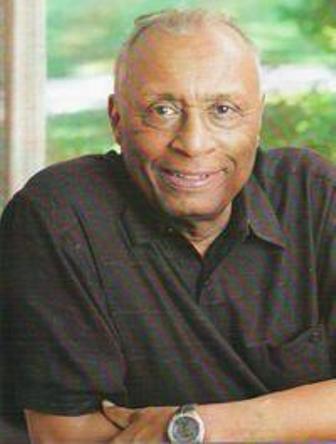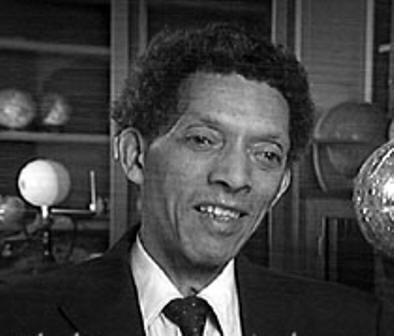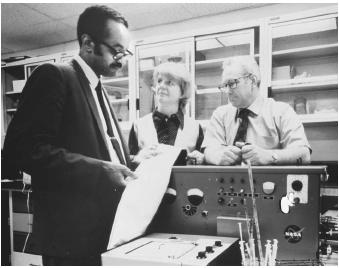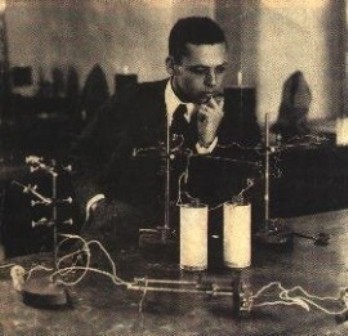You are using an out of date browser. It may not display this or other websites correctly.
You should upgrade or use an alternative browser.
You should upgrade or use an alternative browser.
Essential The Official African American Thread#2
- Thread starter Rhapscallion Démone
- Start date
More options
Who Replied?IllmaticDelta
Veteran
The logic behind the selection of certain african tribes and stocks for very specific purposes in North America/USA














IllmaticDelta
Veteran
Black Lightning
Superstar
IllmaticDelta
Veteran
the pride and strength





IllmaticDelta
Veteran
Elle Driver
Veteran
The logic behind the selection of certain african tribes and stocks for very specific purposes in North America/USA







Wish my homeboy Supper still came on here. He was VERY deep in AA history(he and @videogamestashbox.com were the ones who got me deep into AA history/culture), but also his info on how AAs influenced American culture were bar NONE!
IllmaticDelta
Veteran
Wish my homeboy Supper still came on here. He was VERY deep in AA history(he and @videogamestashbox.com were the ones who got me deep into AA history/culture), but also his info on how AAs influenced American culture were bar NONE!
on that note
Aframs and the origin of American style/southern BBQ
How Southern Barbecue got to Texas
Hint: Slaves Brought it With Them

A Southern Barbecue, a wood engraving from a sketch by Horace Bradley, published in Harper’s Weekly, July 1887
Tim Miller helped explain why Texans might have forgotten slaves’ influence in his book, Barbecue: A History.
Of course, barbecue would have come to much of Texas the same way it came to most of the American South: through the influx of slave owners and their slaves, moving west across the continent. The rewriting of the story of Texas described above not only made Texas history, focusing on cowboys, a proper subject after the Civil War, but in the process also wrote blacks out of the state’s history entirely, leaving a question mark in terms of where barbecue came from.
By the time Robb Walsh wrote his award-winning article for the Houston Press, “Barbecue in Black and White,” the black pitmaster stereotype was gone from Texas. Walsh asked, “How did it happen that we forgot blacks used to cook barbecue in Texas in the first place?” Walsh also recounts an admission from a famous white barbecue joint owner about Memphis’ barbecue roots. Charlie Vergos of the famous Rendezvous restaurant told Lolis Elie in his documentary, Smokestack Lightning: A Day in the Life of Barbecue:
Brother, to be honest with you, [barbecue] don’t belong to the white folks, it belongs to the black folks. It’s their way of life, it was their way of cooking. They created it. They put it together. They made it. And we took it and we made more money out of it than they did. I hate to say it, but that’s a true story.
How Southern Barbecue got to Texas : TMBBQ
.
.
.
Kansas City-style barbecue refers to the specific regional barbecue style of slowly smoked meat that evolved from the pit of Henry Perry in the early 1900s in Kansas City, Missouri. Kansas City barbecue is slow-smoked over a variety of woods and then covered with a thick tomato- and molasses-based sauce.[1]



IllmaticDelta
Veteran
Black Power/Pan-Africanism/Afrocentrism
As you know these were often intertwined

W.E.B. Du Bois – The father of modern Pan-Africanism?
W.E.B. Du Bois - The father of modern Pan-Africanism?
Pan-Africanism
As you know these were often intertwined

W.E.B. Du Bois – The father of modern Pan-Africanism?
But this was not true. Du Bois was proud of his African ancestry and often talked of his African-born great grandfather, whom he said had been brought as a slave to America from the Gulf of Guinea. In 1923, Du Bois paid his first visit to Africa, to a region in Liberia where he believed his ancestors had come from. Despite Marcus Garvey’s attacks on him, Du Bois continued to be viewed by Africans as the father of modern pan-Africanism. His role in establishing the Pan-African Congresses and his agitation for an end to colonialism, made him an inspiration to many African leaders, among them Nigeria’s Nnamdi Azikiwe, who met him while a student in the US, and Ghana’s Kwame Nkrumah, who first met Du Bois at the 1945 Pan-African Congress in Britain. Also there was Kenya’s Jomo Kenyatta and Malawi’s Hastings Banda.
Pan-Africanism
Pan-Africanism, the idea that peoples of African descent have common interests and should be unified. Historically, Pan-Africanism has often taken the shape of a political or cultural movement. There are many varieties of Pan-Africanism. In its narrowest political manifestation, Pan-Africanists envision a unified African nation where all people of the African diaspora can live. (African diaspora refers to the long-term historical process by which people of African descent have been scattered from their ancestral homelands to other parts of the world.) In more-general terms, Pan-Africanism is the sentiment that people of African descent have a great deal in common, a fact that deserves notice and even celebration.
History of Pan-Africanist intellectuals
Pan-Africanist ideas first began to circulate in the mid-19th century in the United States, led by Africans from the Western Hemisphere. The most important early Pan-Africanists were Martin Delany and Alexander Crummel, both African Americans, and Edward Blyden, a West Indian.
Those early voices for Pan-Africanism emphasized the commonalities between Africans and black people in the United States. Delany, who believed that black people could not prosper alongside whites, advocated the idea that African Americans should separate from the United States and establish their own nation. Crummel and Blyden, both contemporaries of Delany, thought that Africa was the best place for that new nation. Motivated by Christian missionary zeal, the two believed that Africans in the New World should return to their homelands and convert and civilize the inhabitants there.
Although the ideas of Delany, Crummel, and Blyden are important, the true father of modern Pan-Africanism was the influential thinker W.E.B. Du Bois. Throughout his long career, Du Bois was a consistent advocate for the study of African history and culture. In the early 20th century, he was most prominent among the few scholars who studied Africa. His statement, made at the turn of the 20th century, that “the problem of the twentieth century is the problem of the color line” was made with Pan-Africanist sentiments in mind.
For Du Bois, “the problem of the color line” was not confined merely to the United States and its “Negro Problem.” (During those years, it was common for many in the United States to refer to the problem of African Americans’ social status as the “Negro Problem.”) Du Bois’s famous statement was made with the clear knowledge that many Africans living on the African continent suffered under the yoke of European colonial rule.
Among the more-important Pan-Africanist thinkers of the first decades of the 20th century was Jamaican-born black nationalist Marcus Garvey. In the years after World War I, Garvey championed the cause of African independence, emphasizing the positive attributes of black people’s collective past. His organization, the Universal Negro Improvement Association (UNIA), boasted millions of members, envisioning and then making plans for a return “back to Africa.” Garvey’s Black Star Line, a shipping company established in part to transport blacks back to Africa as well as to facilitate global black commerce, was ultimately unsuccessful.
From the 1920s through the 1940s, among the most-prominent black intellectuals who advocated Pan-Africanist ideas were C.L.R. James and George Padmore, both of whom came from Trinidad. From the 1930s until his death in 1959, Padmore was one of the leading theorists of Pan-African ideas. Also influential were Léopold Senghor and Aimé Césaire, who were natives of Senegal and Martinique, respectively. A disciple of Padmore, Jomo Kenyatta of Kenya, was also an important figure in Pan-Africanist thought.
Despite their origins outside the United States, such Pan-Africanist thinkers drew many of their ideas from African American culture. Furthermore, James and Padmore resided in the United States for significant periods of time. An exchange of ideas about Africa and peoples of African descent took place between those intellectuals and African Americans, with African Americans taking the lead. It was, in many ways, a black Atlantic intellectual community. Senghor and Césaire, in particular, were greatly influenced by Du Bois and by several Harlem Renaissance writers, especially Countee Cullen, Langston Hughes, and Claude McKay. In the 1930s and ’40s, the African American actor and singer Paul Robeson was also a significant contributor to the continuing exchange of ideas.
By the late 1940s the African American intellectual leadership of the movement had receded, with Africans now taking the lead. That was due in part to the leftist or communist sympathies of many Pan-Africanist advocates, as in the late 1940s and early ’50s, the United States was in the midst of a Red Scare, when Americans with communist affiliations or sympathies were actively persecuted and prosecuted. The most-important figure of this period was Kwame Nkrumah of Ghana, who believed that European colonial rule of Africa could be extinguished if Africans could unite politically and economically. Nkrumah went on to lead the movement for independence in Ghana, which came to fruition in 1957. Many African Americans cheered those developments in Africa.
Pan-Africanist cultural thinking reemerged with renewed force in the United States in the late 1960s and ’70s as one of the manifestations of the Black Power movement. By the early 1970s it had become relatively common for African Americans to investigate their African cultural roots and adopt African forms of cultural practice, especially African styles of dress.
In subsequent decades perhaps the most-prominent current of ideas that can be called Pan-Africanist has been the Afrocentric movement, as espoused by such black intellectuals as Molefi Asante of Temple University, Cheikh Anta Diop of Senegal, the American historian Carter G. Woodson, and Maulana Ron Karenga, the creator of Kwanzaa. With its roots in the 1960s, Afrocentrism gained particular popularity in the United States during the 1980s. The movement emphasizes African modes of thought and culture as a corrective to the long tradition of European cultural and intellectual domination.
The Pan-African Congress movement
During the 20th century advocates of Pan-Africanism made many efforts to institutionalize their ideas and to create formal organizations to complement the work of Pan-Africanist intellectuals. The first meeting designed to bring together peoples of African descent for the purpose of discussing Pan-Africanist ideas took place in London in 1900. The organizer was Henry Sylvester Williams, a native of Trinidad. The meeting was attended by several prominent blacks from Africa, Great Britain, the West Indies, and the United States. Du Bois was perhaps the most-prominent member of U.S. delegation.
The first formal Pan-African Congress (the first to bear that name) took place in 1919 in Paris and was called by Du Bois. That meeting was followed by a second Pan-African Congress two years later, which convened in three sessions in London, Brussels, and Paris. The most-important result of the second Pan-African Congress was the issuance of a declaration that criticized European colonial domination in Africa and lamented the unequal state of relations between white and black races, calling for a fairer distribution of the world’s resources. The declaration also challenged the rest of the world to either create conditions of equality in the places where people of African descent lived or recognize the “rise of a great African state founded in Peace and Goodwill.”
After a third Pan-African Congress in 1923 and then a fourth in 1927, the movement faded from the world picture until 1945, when a fifth Pan-African Congress was held in Manchester, England. Given that Pan-Africanist leadership had largely transferred from African Americans to Africans by the mid-1940s, Nkrumah, Kenyatta, and Padmore played the most-prominent roles at that congress. The only African American present was Du Bois.
With the coming of independence for many African countries in the decades following World War II, the cause of African unity was largely confined to the concerns of the African continent. The formation of the Organization for African Unity (OAU) in 1963 solidified African leadership, although a sixth Pan-African Congress was held in Dar es Salaam, Tanzania, in 1974. A successor organization to the OAU, the African Union (AU), was launched in 2002 to further promote the social, political, and economic integration of Africa.
Calls for Pan-Africanism could still be heard in the United States at the turn of the 21st century, but by then the movement had generally come to stand for the unity of the countries on the African continent, especially sub-Saharan Africa.
Pan-AfricanismIllmaticDelta
Veteran


The Pan-African Conference movement was begun in Chicago in 1893 with such people in the leadership as Bishop Henry McNeal Turner. This Pan-African movement continued with conferences held in England in 1900 under the direction of Trinidadian Henry Sylvester Williams, with W. E. B. DuBois and other African Americans playing a prominent role.
In the aftermath of World War I, the Pan-African movement was revived with DuBois organizing a Congress in Paris in 1919 with other leaders from the African world, including Addie W. Hunton, who had gone to France during the war to work with African-American servicemen suffering under deplorable conditions.
The [Marcus] Garvey Movement—the Universal Negro Improvement Association (UNIA)—founded in Jamaica and relocated in New York, reached its zenith during the 1920s with millions of members and supporters, its Negro World newspaper and its establishment of chapters throughout the world, including the African continent.
www.workers.org/2007/us/detroit1967-0816/Atrocities committed by the Belgians in Congo, the British in southern Africa and East Africa as well as the French, Germans, Spanish and Italians in other regions of the continent, had a tremendous impact on Africans living in the western hemisphere. The descendants of Africans who were enslaved in the North America, the Caribbean and Latin America, began to hold meetings on how they could have an impact on alleviating the problems of European intervention in their ancestral home. These Africans saw a direct connection between the colonialism, national oppression, racism and race terror inflicted on people in the West and the conditions under which people were living in the homeland.
As a result in 1893 the first noted Pan-African Conference was held in Chicago. This meeting, which lasted for an entire week, is now recognized as a turning point in the struggle of Africans to build an international movement against colonialism and imperialism and for national independence and continental unity.
The 1893 Chicago Congress on Africa predated by seven years the first formal international Pan-African conference that was held in London in 1900 under the direction of Trinidadian-born Henry Sylvester Williams. This Congress was attended by such activists as Bishop Henry McNeal Turner of the African Methodist Episcopal Church (AME) and Bishop Alexander Walters of the African Methodist Episcopal Zion (AMEZ).
Although notables such as Edward Wilmont Blyden of Liberia and Booker T. Washington had promised papers but did not attend, a broad range of topic were discussed including “The African in America”, “Liberia as a Factor in the Progress of the Negro Race”, and a very challenging presentation entitled “What Do American Negroes Owe to Their Kin Beyond the Sea”.”
Henry McNeal Turner utilized the Chicago Congress to advance the notion of repatriation as a mechanism for building self-determination among Africans in the West and on the continent. He had warned the African-American people some months before that France had demonstrated territorial designs on the nation of Liberia.
This conference in 1893 pave the way for the Pan-African conference held in Atlanta, Georgia some two years later in 1895 that was sponsored by the Steward Missionary Foundation for Africa of Gammon Theological Seminary.
The 1895 meeting was attended by people such as John Henry Smyth, who served as a minister resident and consul general to Liberia. In his paper presented to the Atlanta gathering he stated that “European contact has brought in its train not merely the sacrifice, amid unspeakable horrors, of the lives and liberties of twenty million Negroes for the American market alone, but political disintegration, social anarchy, moral and physical debasements.”
Some two years later the African Association was formed in England on September 24, 1897. This organization was spearheaded by Henry Sylvester Williams, a lawyer from Trinidad, who would later play an instrumental role in organizing a Pan-African Conference in London in July of 1900. This gathering is often considered as the turning point in the world-wide struggle for African unity and liberation that characterized the 20th century.
During the period of the first decade of the 20th century, there were a number of efforts to form race organizations in the United States and other parts of the Diaspora. In 1905, the Niagara Movement was formed on the United States and Canadian borders.
.
.
The Long March to Unity
From a group of black people with aspiration for the integration of the black society all over the world to the establishment of OAU, the later AU, Pan Africanism has come a long way through centuries. Here are the milestone happenings in the history of Pan Africanism.

The Long March to Unity
.
.


IllmaticDelta
Veteran
Black Nationalism




Underappreciated and often replicated. Call us the swag, creativity & innovation gawds.
Call us the swag, creativity & innovation gawds.


 Call us the swag, creativity & innovation gawds.
Call us the swag, creativity & innovation gawds.


Black Lightning
Superstar

Gerald Anderson “Jerry” Lawson was an American electronic engineer known for his work in designing the Fairchild Channel F video game console.
During development of the Channel F in the early-mid 1970s, Lawson was Chief Hardware Engineer and director of engineering and marketing for Fairchild Semiconductor’s video game division. He also founded and ran Videosoft, a video game development company which made software for the Atari 2600 in the early 1980s, as the 2600 had displaced the Channel F as the top system in the market.
Lawson along with Ron Jones were the sole black members of the Homebrew Computer Club, a group of early computer hobbyists which would produce a number of industry legends, including Apple founders Steve Jobs and Steve Wozniak. Lawson also produced one of the earliest arcade games, Demolition Derby, which debuted in a southern California pizzeria shortly after Pong. Lawson later worked with the Stanford mentor program and was preparing to write a book on his career.

Lewis Latimer (1848 – 1928)
What He Invented: The Carbon Filament For The Light Bulb.
Why It’s Important: Latimer is one of the greatest inventors of all time. Thomas Edison may have invented the electric lightbulb, but Latimer helped make it a common feature in American households. In 1881 he received a patent for inventing a method of producing carbon filaments, which made the bulbs longer-lasting, more efficient and cheaper.
In 1876, he worked with Alexander Graham Bell to draft the drawings required for the patent of Bell’s telephone.

As a child, Mark Dean excelled in math. In elementary school, he took advanced level math courses and, in high school, Dean even built his own computer, radio, and amplifier. Dean continued his interests and went on to obtain a bachelor's degree in electrical engineering from the University of Tennessee, a masters degree in electrical engineering from Florida Atlantic University and a Ph.D. in electrical engineering from Stanford. He is one of the most prominent black inventors in the field of computers.
Dr. Mark Dean started working at IBM in 1980 and was instrumental in the invention of the Personal Computer (PC). He holds three of IBM's original nine PC patents and currently holds more than 20 total patents. The famous African-American inventor never thought the work he was doing would end up being so useful to the world, but he has helped IBM make instrumental changes in areas ranging from the research and application of systems technology circuits to operating environments. One of his most recent computer inventions occurred while leading the team that produced the 1-Gigahertz chip, which contains one million transistors and has nearly limitless potential.

Henry Sampson was born in Jackson Mississippi, where he graduated from Lanier High School in 1951. He went on to attend Morehouse College for two years, then transferred to Purdue University where he graduated with a B.S. Degree in Chemical Engineering. Continuing on to graduate school, Henry Sampson attended UCLA where he was awarded a Masters in Engineering in 1961. Sampson also received his MS in Nuclear Engineering from the University of Illinois Urbana-Champaign, in 1965, and his PHD in 1967. He is the first African American to earn a Ph.D.in Nuclear Engineering in the United States.
Sampson was employed as a research chemical engineer at the U.S. Naval Weapons Center, China Lake, California, in the area of high energy solid propellants and case bonding materials for solid rocket motors. Henry Sampson also served as the Director of Mission Development and Operations of the Space Test Program at the Aerospace Corporation in El Segundo, California.
His patents included a binder system for propellants and explosives and a case bonding system for cast composite propellants. Both inventions are related to solid rocket motors. He received a patent, with George H. Miley, for a gamma-electrical cell on July 6, 1971.
On July 6, 1971, Sampson was awarded a patent for the “gamma-electric cell”, which pertains to Nuclear Reactor use. (U.S. Patent 3,591,860) This invention produces stable high-voltage output and current to detect radiation in the ground.
His Gamma-Electric cell device converts nuclear radiation from reactors or isotopes, directly into electricity without going through a heat cycle. In the nuclear fusion process, which involves the splitting of atom, radioactive materials emit ionizing radiation that can cause serious damage to living tissues. Constructive methods to convert these powerful radiating energies into practical and safe energy sources, is the fundamental philosophy behind the development of Sampson's Gamma-Electric Cell.
Henry Sampson is also a writer and film historian who wrote a book entitled, "Blacks in Black and White: A Source Book on Black Films." Since its acclaimed publication in 1977 as a pioneering work, this has remained the first and only book to detail all aspects of a unique era in the history of motion pictures, the only time in the U.S. when films featuring an all-Black cast, produced and directed by Blacks, were shown primarily to Black audiences, in theatres many of which were owned and managed by Blacks.
Henry Sampson traces the history of the Black film industry from its beginnings around 1910 to its demise in 1950, chronicling the activities of pioneer Black filmmakers and performers who have been virtually ignored by film historians. Henry T. Sampson has also written "Blacks in Blackface: A Source Book on Early Black Musical Shows" and "The Ghost Walks: A Chronological History of Blacks in Show Business, 1865-1910".
Some of Henry Sampson's accomplishments include being a member of the United States Navy between the years 1962 and 1964 and earning an Atomic Energy Commission honor between 1964 and 1967. Later he was awarded the Black Image Award from Aerospace Corporation in 1982. He was awarded the Blacks in Engineering, Applied Science Award, and prize for education, by the Los Angeles Council of Black Professional Engineers in 1983.

George Carruthers is an African American inventor, physicist, and space scientist. He has gained international recognition for his work which focuses on ultraviolet observations of the earth's upper atmosphere and of astronomical phenomena. George Carruthers first major contribution to science was to lead the team that invented the far ultraviolet camera spectrograph. Dr. Carruthers received a patent for his invention the "Image Converter for Detecting Electromagnetic Radiation specially in Short Wave Lengths" on November 11, 1969. He also developed the first moon based space observatory, an ultraviolet camera that was carried to the moon by Apollo 16 astronauts in 1972.

Imagine living in a world ranging from hazy, clouded vision to that of total darkness for 30 years. Before 1985, that was the plight of those with cataracts who did not want to risk surgery with a mechanical grinder. Now imagine sitting in a doctor's office without being able to see her as she explains that it may be possible to restore your vision. You can't tell by studying body language whether to trust this person or if they're pulling your leg. All you have to go by is the sound of the voice assuring you that this procedure is safe, more accurate and more comfortable than traditional cataract surgery.
As a noted Opthamologist and famous black inventor, Dr. Patricia Bath has dedicated her life to the treatment and prevention of visual impairments. Her personal belief that everyone has the "Right to Sight" led to her invention in 1985 of a specialized tool and procedure for the removal of cataracts. With the Laserphaco Probe and procedure, Dr. Bath increased the accuracy and results of cataract surgery, which had previously been performed manually with a mechanical grinder.
The difference between the old method and her new invention was the difference between the use of highly accurate laser technology and the somewhat subjective accuracy of a mechanical device. The Laserphaco Probe combined an optical laser, irrigation system and suction tubes. In use, the laser is inserted into a tiny incision on the eye; the laser then vaporizes the cataract and lens material, which is removed via the suction tubes. A replacement lens is then inserted on the eye.
With the Laserphaco Probe invention and the development of the procedure for its use, Dr. Bath helped restore the sight of several people who had been blinded by cataracts for up to 30 years. Imagine the joy they felt when they opened their eyes to see Dr. Patricia Bath's smiling face for the first time.

Did you ever think of what it might be like if your television could project the on-screen image directly into your living room as a 3-Dimensional image? Maybe not, but if it happens, you'll have African-American inventor Valerie Thomas to thank for it.
From 1964 to 1995, Thomas worked in a variety of capacities for NASA where she developed real-time computer data systems, conducted large-scale experiments and managed various operations, projects and facilities. While managing a project for NASA's image processing systems, Thomas' team spearheaded the development of "Landsat," the first satellite to send images from space.
In 1976, Thomas learned how concave mirrors can be set up to create the illusion of a 3-dimensional object. She believed this would be revolutionary if technology could be harnessed to transmit this illusion. With an eye to the future, Valerie Thomas began experimenting on an illusion transmitter in 1977. In 1980, she patented it. In operation, concave mirrors are set up on both ends of the transmission. The net effect of this is an optical illusion of a 3-dimensional image that looks real on the receiving end. This brilliant innovation placed Thomas among the most prominent black inventors of the 20th century.
NASA continues to use her technology and is exploring ways to use it in surgical tools and possibly television and video.
Black Lightning
Superstar

Charles R. Drew, a renowned physician and medical researcher and the first black surgeon examiner of the American Board of Surgery, revolutionized medicine by creating a system that allowed the immediate and safe transfusion of blood plasma.

Janet Emerson Bashen is the first African American female to hold a patent for a software invention. Her software, LinkLine, is a web-based application for EEO claims intake and tracking, claims management, document management and numerous reports. Ms. Bashen was issued U.S. patent #6,985,922 on January 10 2006, for a “Method, Apparatus and System for Processing Compliance Actions over a Wide Area Network.”
David Crosthwait held numerous patents relating to heat transfer, ventilation, and air conditioning, the areas in which he was considered an expert.

Emmett Chappelle is a scientist and researcher who made valuable contributions in several fields, including medicine, biology, food science, and astro-chemistry. Chappelle is the recipient of 14 U.S. patents and was recently recognized as one of the 100 most distinguished African American scientists and engineers of the 20th Century.

Dr. Ernest Just was a pioneering African American biologist, academic and science writer. Just's primary legacy is his recognition of the fundamental role of the cell surface in the development of organisms. In his work within marine biology, cytology and parthenogenesis, he advocated the study of whole cells under normal conditions, rather than simply breaking them apart in a laboratory setting.
Dr. Percy L. Julian




